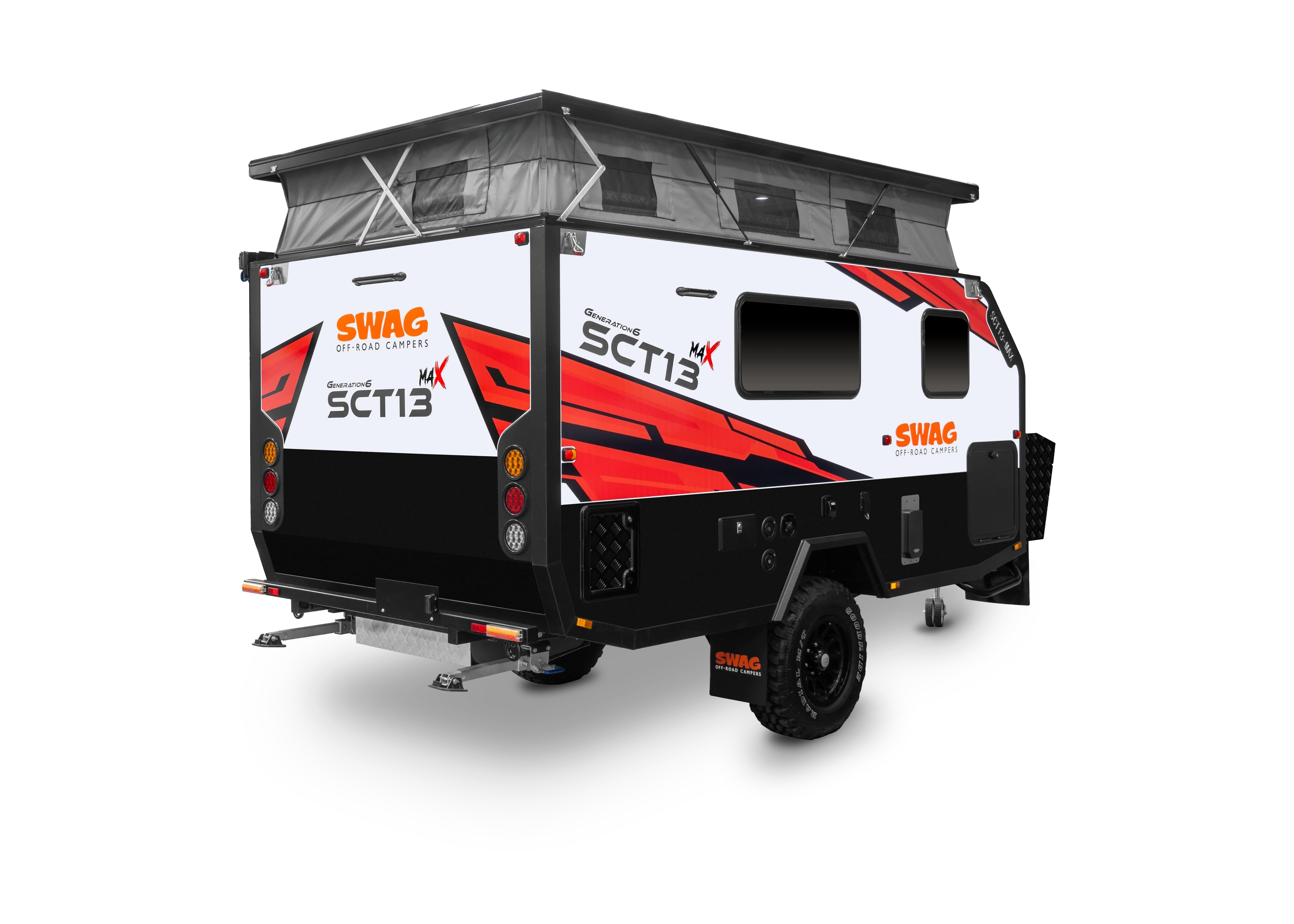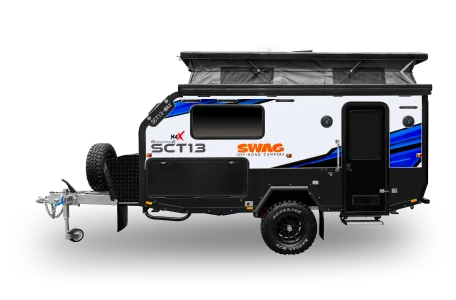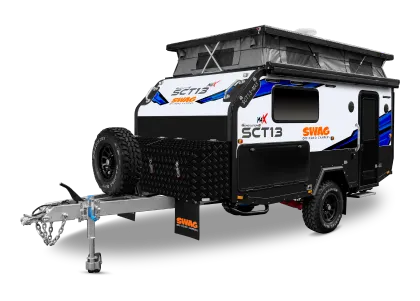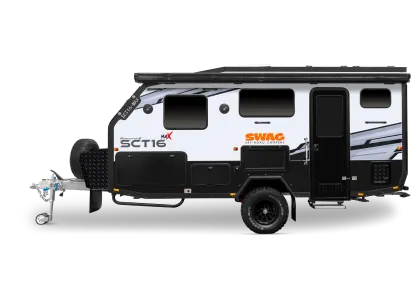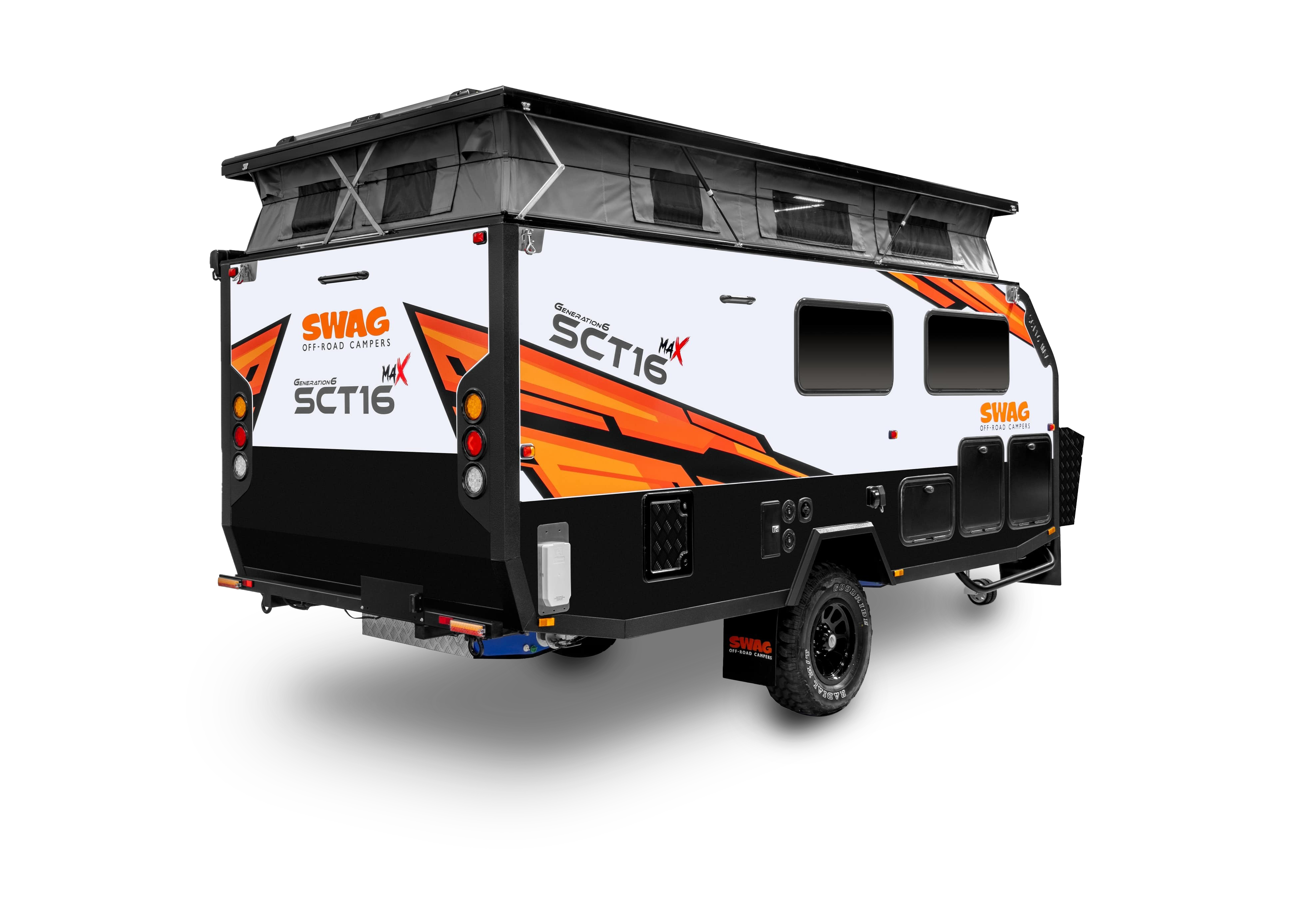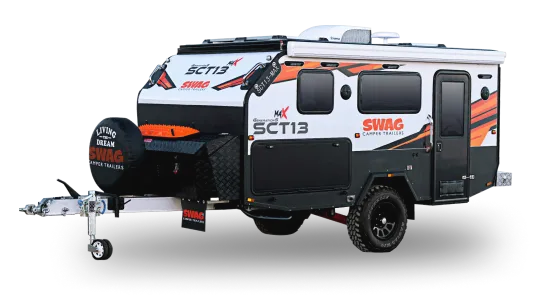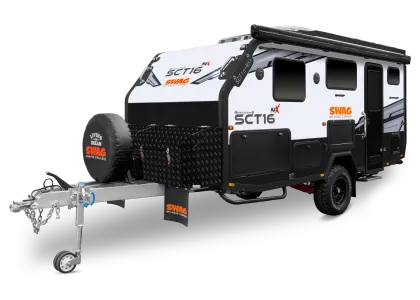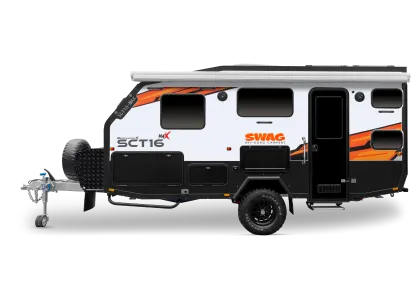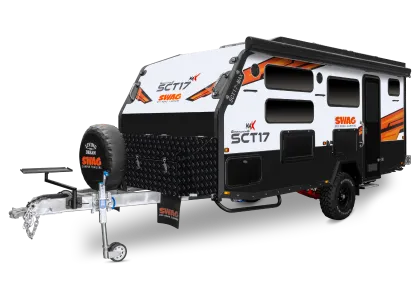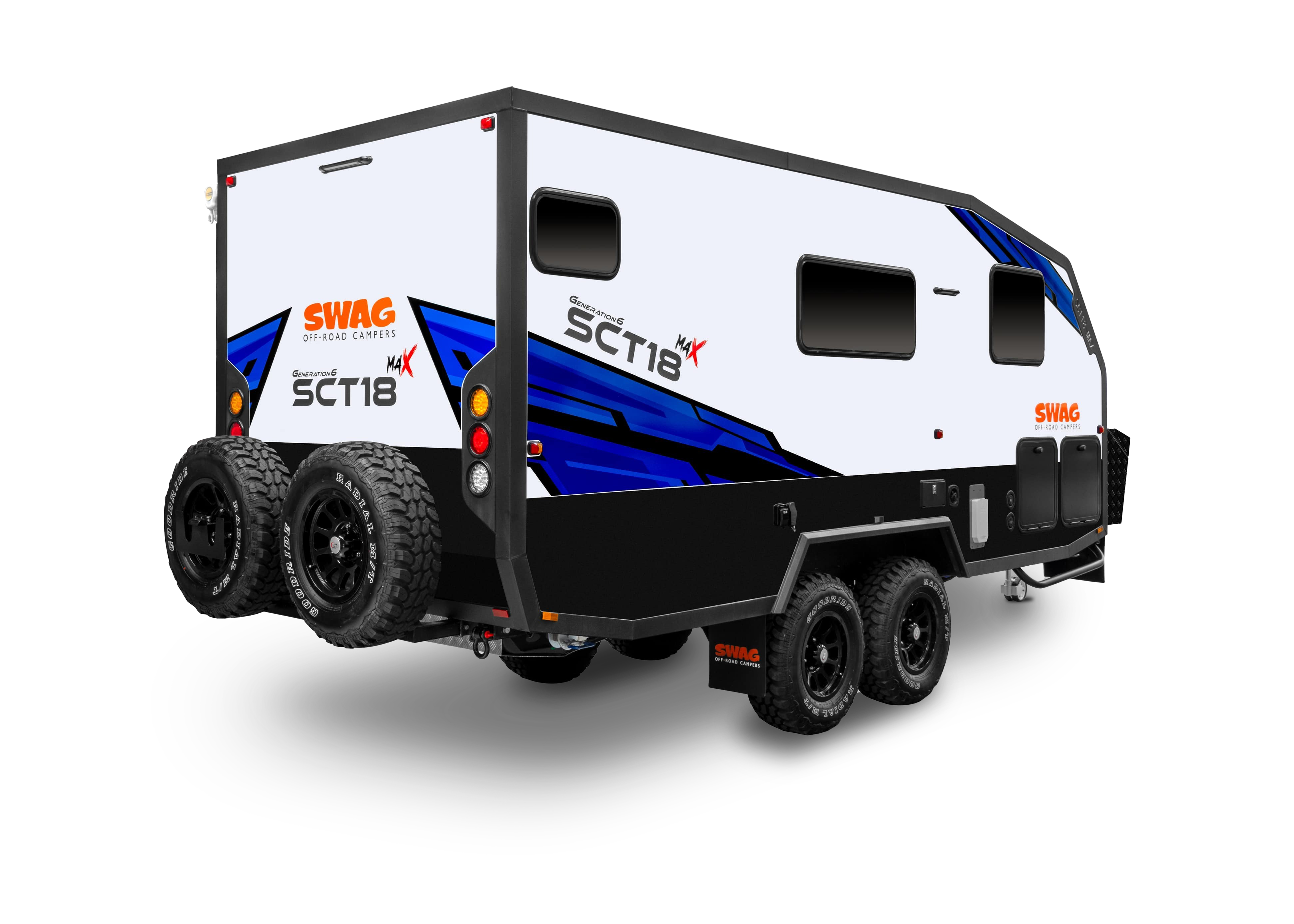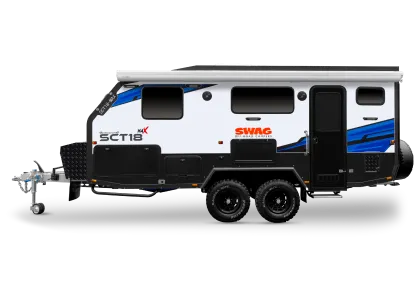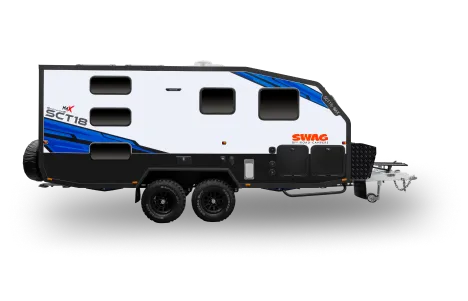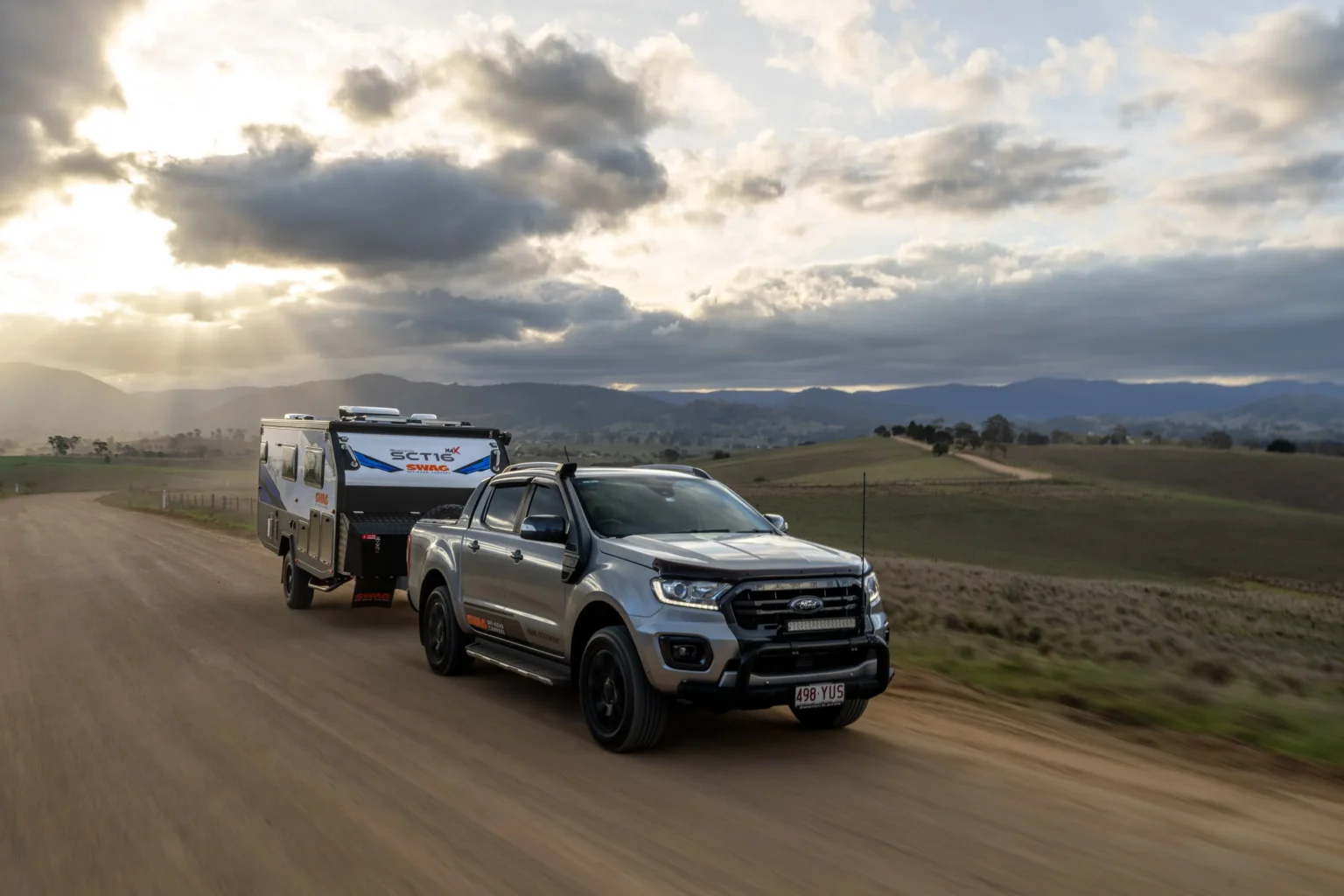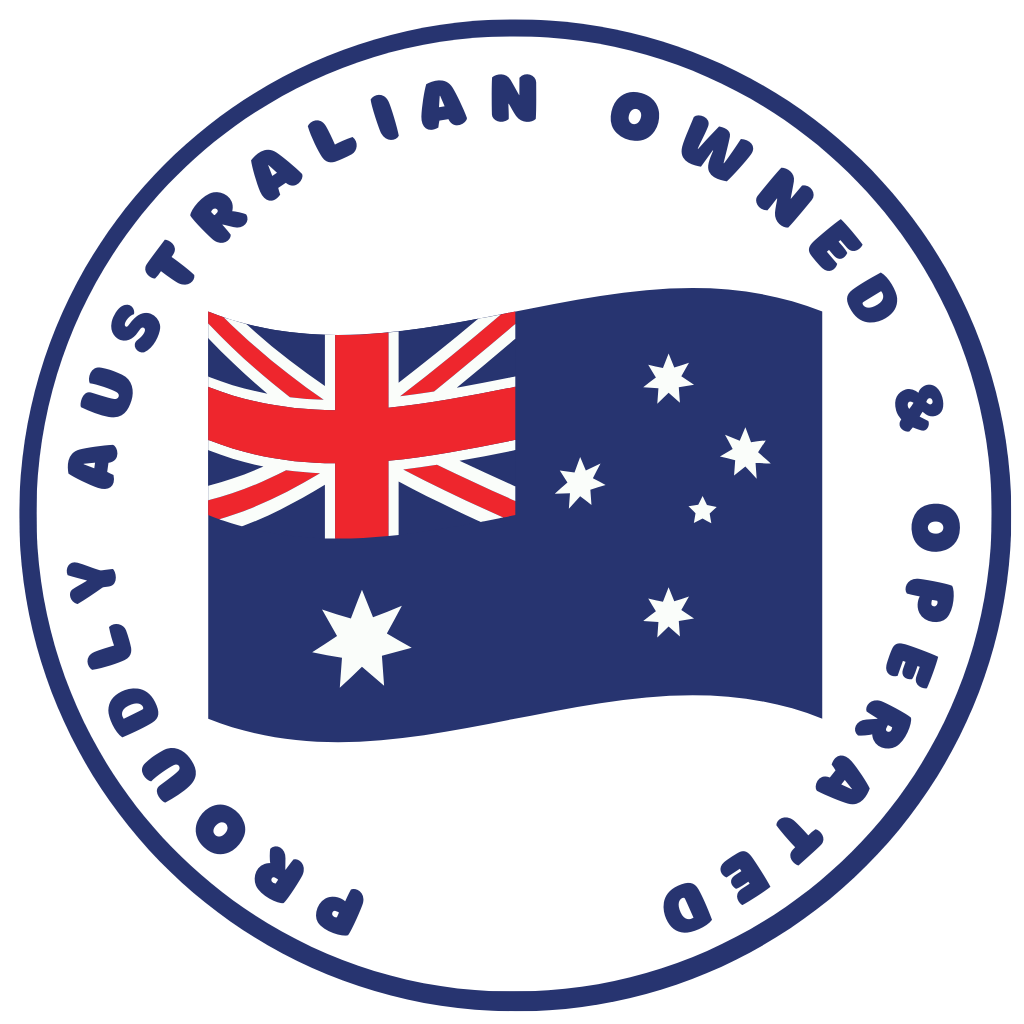Towing a caravan can be a great way to adventure Australia. But, it’s important you understand caravan towing weights before hitting the road. Specifically, the weight and size of a caravan your vehicle can tow safely.
Understanding your vehicle’s towing capacity, the weight of the caravan, and the tow ball weight is crucial to avoid accidents, legal issues, and unnecessary wear on your vehicle. And by learning this capacity, you’ll be able to match a vehicle to your caravan or caravan to your vehicle confidently, ensuring a safer trip.
Understanding Caravan Towing Weights
When talking caravan weights, you’ll notice the same key weight terms mentioned. The most commonly mentioned terms include:
- Aggregate trailer mass (ATM)
- Tare mass
- Gross trailer masse (GTM)
- Tow ball weight (TBM)
- Gross combined mass (GCM)
Most of these will be displayed on your caravan’s compliance plate. But if not, they will likely be in your manual. If you can’t find it on either, it’s recommended you contact your manufacturer for advice.
Aggregate Trailer Mass (ATM)
Aggregate Trailer Mass (ATM) refers to the maximum weight a caravan can reach when fully loaded. This includes all gear, fluids, and passengers. Essentially, ATM is the total weight exerted on the ground by both the wheels and the tow ball when the caravan is not hitched to a vehicle.
It’s crucial to ensure the ATM does not exceed your towing capacity. Exceeding it can put undue strain on your vehicle, leading to dangerous situations. If the caravan is too heavy, it can cause your vehicle’s engine, brakes, and transmission to struggle. This can increase the risk of accidents, such as loss of control or brake failure.
Tare Mass
The Tare Mass is the unladen weight of the caravan. In other words, the weight of the caravan as it leaves the manufacturer, with no cargo, water, or personal items inside.
The tare mass is the starting point for calculating your caravan’s total weight once loaded. Always check the Tare Mass to ensure you’re not overloading the caravan when preparing for a trip.
Extended mirrors are important because they reduce these blind spots, offering a more comprehensive view of the road. This enhanced visibility is critical for making safe lane changes, reversing a caravan, and navigating tight spaces, ultimately reducing the risk of accidents and ensuring a safer towing experience.
Gross Trailer Mass (GTM)
The Gross Trailer Mass (GTM) is the maximum weight that the caravan’s wheels can bear when the caravan is fully loaded and attached to the towing vehicle. It excludes the weight on the tow ball.
This measurement is important for understanding how much weight is transferred to the caravan’s axles and ensuring that the caravan is safely balanced during towing.
Tow Ball Weight (TBW)
Tow Ball Weight (TBW) refers to the amount of weight the caravan exerts on the tow ball of the towing vehicle.
Ideally, the TBW should be around 10% of the caravan’s total weight. Too much or too little weight on the tow ball can result in poor handling, swaying, or even a loss of control while driving.
Gross Combined Mass (GCM)
The Gross Combined Mass (GCM) is the total allowable weight of both the fully loaded towing vehicle and the fully loaded caravan combined. This is the maximum weight that the vehicle’s engine, transmission, and chassis can handle.
Exceeding the GCM can cause strain on your vehicle. This could lead to unsafe conditions and potentially void your insurance.
Legal and Safety Considerations for Towing Weights
Risks of Exceeding Towing Limits
Towing a caravan heavier than what your vehicle is designed to handle can affect critical driving functions, such as braking, steering, and overall vehicle control. This can lead to dangerous situations, including loss of control, increased stopping distances, and instability at higher speeds. This is especially true on winding or uneven roads.
These safety risks are why laws in Australia strictly regulate towing capacities, requiring drivers to stay within the limits set by their vehicle manufacturer.
Legal Towing Capacity Limits in Australia
In Australia, the legal towing capacity for a vehicle is set by the manufacturer and must be followed to comply with road safety regulations. This limit includes both the towing capacity and the Gross Combined Mass (GCM). Each state and territory in Australia may enforce these regulations separately. While the general rules are consistent, some states may have specific towing requirements.
For example:
- In Queenlsand, the caravan’s ATM must not exceed the vehicle’s towing capacity, and the Tow Ball Weight should not be more than 10% of the caravan’s ATM.
- In Victoria, the law requires that towing mirrors be fitted if the caravan obstructs the driver’s rearward view, ensuring full visibility for safe driving.
Like with caravan parking requirements, it’s recommended you check the specific towing laws in your state or territory (or where you plan on travelling) to avoid penalties.
These safety risks are why laws in Australia strictly regulate towing capacities, requiring drivers to stay within the limits set by their vehicle manufacturer.
How to Determine What Size Caravan Your Vehicle Can Tow
Check Your Vehicle’s GCM and Towing Capacity
The first step in determining what size caravan your vehicle can tow is to check your vehicle’s Gross Combined Mass (GCM) and towing capacity.
These specifications will most likely be found in your vehicle’s owner’s manual or by checking the manufacturer’s website. The GCM is the maximum allowable weight for both the fully loaded towing vehicle and the fully loaded caravan combined. The towing capacity, on the other hand, is the maximum weight your vehicle can safely tow. Ensuring that both figures are within your vehicle’s limits is critical for safe and legal towing.
How Are Manufacturer Recommendations Decided?
The recommended towing capacity of a vehicle isn’t just an incentive to buy a larger or more upgraded model.
Manufacturers calculate tow ratings based on the vehicle’s engine power, braking system, chassis strength, and other key components. These ratings are set after rigorous testing to determine the vehicle’s ability to tow safely under various conditions. The two common ratings provided are:
- Braked towing capacity (the maximum weight the vehicle can tow when the caravan is equipped with its own braking system).
- Unbraked towing capacity (the maximum weight the vehicle can tow when the caravan does not have its own brakes).
Following these recommendations is important, as exceeding them can cause mechanical issues or accidents, and may void your vehicle warranty.
Matching a Caravan to Vehicle
To figure out which caravans you may be able to tow, you should consider both the aggregate trailer mass of a caravan and your vehicle’s recommended towing capacity. A caravan’s aggregate trailer mass must be lower than your vehicle’s towing capacity to ensure safe towing.
It’s also crucial to account for the caravan’s Tare Mass (unladen weight) and estimate how much additional weight will be added when the caravan is fully loaded. The caravan should not exceed your vehicle’s towing capacity even when loaded with all your gear, food, water, and passengers.
In addition to the weight of the caravan you can safely tow, you should make sure your vision is full too. This will help when safely reversing a caravan. In some cases, you may need extended mirrors.
Importance of Leaving a Safety Margin or Buffer
It’s usually best to leave a bit of a buffer or safety margin between the maximum towing capacity of your vehicle and the weight of the caravan. It’s always better to be safe than sorry as your vehicle parts may have degraded over time or could be experiencing a fault you’re unaware of.
A good rule of thumb is to aim for 80-85% of your vehicle’s maximum towing capacity. This safety buffer ensures your vehicle performs at its best and gives you extra peace of mind, reducing the risk of mechanical failure and ensuring a safer towing experience.
How to Calculate The Weight of Caravan You Can Tow
Now you’re familiar with the common towing terminology and where to find the numbers, here’s a simplified formula for calculating the maximum caravan weight your vehicle can tow:
Gross Combined Mass (GCM) – Gross Vehicle Mass (GVM) = Maximum Towing Capacity
This is the simplest formula to work out how much weight your vehicle can tow. GCM refers to the maximum weight of your vehicle and the trailer combined when fully loaded. GVM refers to the maximum weight your vehicle can carry, including passengers, cargo, and tow ball weight.
Example use:
- GCM (Gross Combined Mass) = 5,500 kg
- GVM (Gross Vehicle Mass) = 3,000 kg
Maximum Towing Capacity = GCM – GVM
Calculation:
- 5,500 kg (GCM) – 3,000 kg (GVM) = 2,500 kg
In this example, it would mean the maximum weight your vehicle can tow is 2,500 kg. As mentioned above, it’s best to leave a buffer between your towing weight and the maximum weight. Just in case you forget to carry the one.
Now You Know Your Caravan Towing Capacity
Before hitting the road on your next adventure, make sure you’re familiar with your vehicle’s towing capacity to ensure you’re fully prepared for a safe journey.
Whether you’re in the market for a new hybrid caravan, hybrid pop-top, or something a fair bit larger, you should familiarise yourself with the capabilities of your vehicle to help make your purchase decision.
For more helpful advice on towing, caravanning, and travel, visit the SWAG blog. Or, say g’day to the SWAG Community on Facebook where like-minded travellers share their latest adventures and tips for caravanning.
